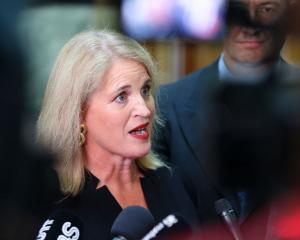
Otago continued to perform strongly, thanks to favourable agricultural conditions for red meat, dairy products and viticulture, while Wellington's unemployment had plunged as government departments increased hiring, construction activity was strong and house prices had continued to rise,
Westpac chief economist Dominick Stephens said in his latest "regional roundup".
The country's economic slowdown in recent quarters had disproportionately affected activity in Auckland and Canterbury, but many regions with an agricultural backbone were booming, as was government-heavy Wellington, he said.
"The outlook for the regions remains broadly positive in 2019 with regional differences expected to narrow over time."
Otago continued to be one of the strongest-performing regions, in part because of conducive conditions in the agricultural sector, with returns on meat and dairy products holding up relatively well, Mr Stephens said.
Otago Chamber of Commerce chief executive Dougal McGowan said Otago and Southland's strengths still lay in the primary sector.
Export documents signed off by the chamber were three times the level of four years ago, sheep, beef and dairy being "strong" exported wood products "stable".
Mr Stephens' report did raise concerns about potentially flagging tourism numbers, and the effects on Queenstown and Central Otago in particular.
Mr McGowan said it was his "main concern" from the data.
"It's all about tourism guest nights and what long-term picture will emerge," he said.
"Some of the red-hot economies in New Zealand, such as Gisborne-Hawke's Bay, Southland, Taranaki-Manawatu-Whanganui, have started cooling off, while its coolest regions are showing signs of a thaw.
"By contrast, Wellington and Otago, who have been among the strongest economies for a while, seem to be powering ahead."
Sharply lower unemployment in Otago had also helped the region, although growth in job vacancies was slowing.
Consumer spending was also likely to have benefited from a buoyant housing market, house prices having picked up in May.
"Economic conditions in Otago are likely to remain relatively buoyant over the coming year, but the region is likely to lose some of its earlier momentum," Mr Stephens said.
Slowing economic growth in key markets, notably Australia and China, was likely to further slow tourism growth, which would probably have a bigger impact on the Central Lakes district than other parts of Otago, which did not depend as much on tourism.
On the positive front, Otago farmers should experience high meat prices and a higher dairy payout, Mr Stephens said.
"A better grape harvest should also translate into higher wine volumes and horticulture will continue to boom."
Economic activity in Southland appeared to be "plateauing", weaker construction activity and slower tourism growth offsetting positive contributions from the agricultural sector, which like Otago had benefited from elevated meat and dairy prices.
"Despite relatively strong dairy prices, confidence among dairy farmers in this region remains low because of concerns about having to comply with environmental regulations and worries about stalling dairy farm prices."
Unemployment in Southland continued to fall, which reflected shortages in key industries, particularly agriculture, manufacturing and tourism-related accommodation and food services.
Southland's outlook was expected to remain buoyant over the coming year, thanks to high meat prices and raised dairy payouts.
"Despite this, sentiment among dairy farmers is likely to remain subdued, although spirits might be lifted a bit by falling interest rates and confirmation that the Government has cancelled its capital gains tax plans."
News the multimillion-dollar makeover of Invercargill's CBD would proceed added to the positive outlook.












